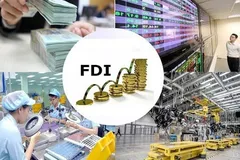
The USD’s Unexpected Resurgence
Throughout much of 2024, expectations of interest rate cuts by the US Federal Reserve (Fed) led to a decline in the USD Index (USDX), boosting financial markets and other asset classes like gold. However, when the Fed enacted its first interest rate cut since the COVID-19 pandemic—a notable 50 basis points instead of the anticipated 25—the USDX staged a surprising rally.
The dollar's ascent was unexpected, particularly as the Fed continued to lower rates, including another reduction in November. At times, the USDX climbed above 108 points, pressuring financial markets and dragging down gold prices.
Several factors have driven this trend. First, the market had already priced in the Fed's monetary easing due to the aggressive rate hikes in 2023. As a result, the dollar's decline earlier in the year reversed once the rate cuts materialised. Second, major central banks such as the European Central Bank (ECB), Swiss National Bank (SNB), and Bank of England (BoE) also pursued significant rate reductions, often faster and deeper than the Fed's, weakening their respective currencies relative to the US dollar. Additionally, the BRICS bloc’s de-dollarisation initiatives have added uncertainty, though no viable alternative to the dollar has emerged. Finally, the re-election of Donald Trump has fostered optimism among investors, as they anticipate improved economic growth, lower inflation, and reduced geopolitical tensions, all of which have bolstered confidence in the dollar and other risk assets like equities, real estate, and digital currencies.
Diverging Trends in Financial Markets
Despite the record-breaking highs in many assets, generating consistent profits in 2024 has been far from straightforward. For instance, while Bitcoin experienced significant gains, many Altcoins remained underwhelming, failing to recover to previous highs.
Gold also showcased similar volatility. Although it surged to new heights, many investors faced losses after buying at peak prices or misjudging its trajectory. Borrowing gold to sell short and repurchasing later became a risky strategy as prices continued to rise.
The US stock market's rally has been predominantly driven by technology stocks, fuelled by advancements in artificial intelligence (AI) and semiconductor technology. Key indices such as the Nasdaq and S&P 500 soared, repeatedly surpassing historical highs, with growth rates of 20–30 times. In contrast, the Dow Jones Industrial Average (DJIA) lagged behind, reflecting its broader sectoral composition.
Vietnam’s stock market has not mirrored the explosive growth seen in US equities. The VN Index continues to hover around the 1,300-point mark, a range it has maintained for nearly two decades. This stagnation is primarily attributed to the market’s heavy reliance on banking stocks, which account for approximately 35% of the HoSE exchange’s total capitalisation.
However, the VN30 Index, which tracks the performance of 30 leading companies, has outperformed the broader VN Index. The VN30 benefits from periodic adjustments to its composition, incorporating higher-quality stocks and sectors with growth potential.
The differing performance of US and Vietnamese markets can be traced to structural and policy factors. (1) Index Composition: US indices like the DJIA and S&P 500 use methodologies similar to the VN30, ensuring that only top-performing companies representing key industries are included. For instance, NVIDIA recently replaced Intel in the DJIA. As a leader in AI and semiconductors, NVIDIA's inclusion has significantly boosted the index's performance. (2) Sectoral Dominance: The US market’s technology-driven growth contrasts sharply with Vietnam’s reliance on financial stocks. The prioritisation of tech sectors has helped US indices thrive, while Vietnam's lack of diversity in listed companies has constrained its market's growth. (3) Investment Policy: Vietnam has made strides in attracting foreign direct investment (FDI), particularly from technology giants like NVIDIA. However, it will take time for these efforts to translate into a more diverse and vibrant stock market.
The Tech Sector’s Role in Growth
Technology stocks have emerged as clear winners in 2024, even for companies with indirect links to AI. A notable example is FPT, a Vietnamese tech firm whose stock price has shattered historical records more than 30 times this year, bringing substantial returns to its shareholders.
The success of companies like FPT underscores the potential for Vietnam’s stock market to expand its technological footprint. By diversifying its offerings and listing more tech-oriented firms, Vietnam can unlock new opportunities for investors and businesses alike.
Vietnam’s stock market stands at a crossroads. To achieve sustained growth and attract global investors, it must address several critical areas: (1) Diversifying Market Offerings: Encouraging the listing of more technology companies will reduce reliance on traditional sectors like banking and create a more balanced market. (2) Enhancing Market Efficiency: Implementing policies that improve transparency, liquidity, and investor confidence will make the market more attractive to both domestic and foreign participants. (3) Capitalising on FDI: Leveraging the influx of FDI into technology sectors will support long-term growth and align Vietnam’s market with global trends.
By embracing these strategies, Vietnam can position its stock market as a hub for innovation and growth, attracting capital flows from traditional safe-haven assets like gold and savings into productive economic activities.
The year 2024 has been a transformative period for global financial markets, with the USD and tech stocks dominating the narrative. While the US market has benefited from its technology-driven growth, Vietnam’s stock market has faced challenges due to its structural composition.
Looking ahead, the continued rise of technology and the evolving global economic landscape present both opportunities and risks. For Vietnam, the path to success lies in embracing diversification and fostering innovation. By doing so, the country can ensure its financial markets remain competitive and resilient in the face of future uncertainties.




















